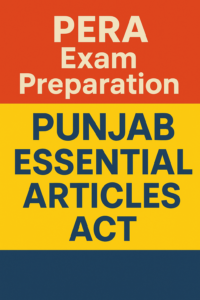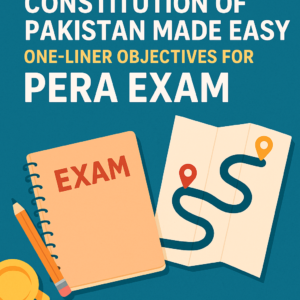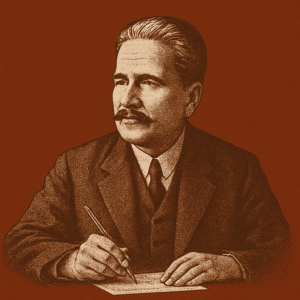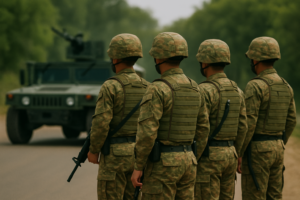- Pakhtoonistan movement was raised in 1947 by Khan Abdul Ghaffar Khan and his supporters in Khyber Pakhtunkhwa (then NWFP).
- Bacha Khan opposed British rule and was allied with the Indian National Congress.
- His Khudai Khidmatgar movement was sidelined after Pakistan’s creation.
- He demanded greater autonomy for Pashtuns and, at times, a separate Pakhtoonistan.
- The Pakistani government viewed it as a separatist movement and took strict actions.
- Bacha Khan and his followers faced imprisonment and restrictions.
- Over time, the movement weakened, and most Pashtun leaders joined Pakistan’s political system.
- Bacha Khan passed away on January 20, 1988, in Peshawar and was buried in Jalalabad, Afghanistan, as per his wish.
- At the time of Partition (1947), British India’s total financial assets were around Rs 400 crore.
- Pakistan’s share was fixed at Rs 75 crore, which included Rs 20 crore already given.
- The remaining Rs 55 crore was delayed due to the India-Pakistan war over Kashmir.
- Mahatma Gandhi insisted on the payment, leading to the release of Rs 55 crore to Pakistan.
- Soon after, Gandhi was assassinated by Nathuram Godse, partly due to this decision.
- Besides cash, military assets were also divided, but Pakistan received a smaller share.
- The division created financial and logistical challenges for the newly formed Pakistan.
- The Delhi Proposal (28 April 1946) was a set of constitutional proposals presented by the All India Muslim League to the Cabinet Mission. Here are the key objective points:
- Proposed by the All India Muslim League as a response to the Cabinet Mission Plan.
- Demanded autonomy for Muslim-majority provinces under a weak central government.
- Suggested grouping of provinces into three sections: A (Hindu-majority), B & C (Muslim-majority).
- Called for separate constitutions for Muslim and Hindu-majority provinces.
- Rejected a strong central government, favoring a federation with limited powers.
- Reflected the Muslim League’s demand for Pakistan without outright separation.
- The Congress rejected the proposal, leading to political deadlock.
- This ultimately paved the way for the demand for an independent Pakistan in 1947.
Non-Cooperation Movement (1920-1922) – Objective Points
- Launched by Mahatma Gandhi in 1920 as part of the Indian independence struggle.
- Aimed to resist British rule through non-violent means (Ahimsa).
- Triggered by the Rowlatt Act (1919), Jallianwala Bagh Massacre (1919), and Khilafat Movement.
- Encouraged boycott of British goods, schools, colleges, courts, and services.
- People resigned from government jobs and stopped using foreign-made goods.
- The movement gained massive participation from all sections of society.
- Called off by Gandhi in 1922 after the Chauri Chaura incident, where violence erupted.
Chauri Chaura Incident (1922) – Objective Points
- Occurred on February 4, 1922, in Chauri Chaura, Uttar Pradesh.
- Protesters participating in the Non-Cooperation Movement clashed with police.
- The police fired on protesters, killing three people.
- In retaliation, the angry mob set fire to a police station, killing 22 policemen.
- Mahatma Gandhi condemned the violence and called off the Non-Cooperation Movement.
- The British government arrested several people and sentenced many to death or life imprisonment.
- The incident highlighted the challenges of maintaining non-violent resistance.
- Marked a temporary setback for the Indian freedom struggle.
Sangathan Movement – Objective Points
- Launched in the 1920s by Hindu nationalist leaders, especially Lala Lajpat Rai and Pandit Madan Mohan Malaviya.
- Aimed at Hindu unity, social reform, and strengthening Hindu society.
- Focused on protecting Hindu rights and countering religious conversions.
- Closely linked to the Shuddhi Movement, which sought to reconvert non-Hindus.
- Encouraged self-defense training and the formation of Hindu organizations.
- Increased communal tensions between Hindus and Muslims.
- Played a role in shaping Hindu nationalist ideologies in pre-independence India.
Global Gender Gap Report 2024 – Rankings
- Bangladesh ranked 99th in the Global Gender Gap Report 2024 by WEF, slipping 40 places from the previous year.
- India ranked 129th, dropping 2 positions from the previous year.
- Pakistan ranked 145th out of 146 countries in the Gender Gap Report 2024.
- Sudan occupies the 146th and last position in the report.
- Sri Lanka ranked 122nd, while Bhutan ranked 124th.
- Iceland retained the 1st position as the most gender-equal country for the 14th consecutive year.
- Afghanistan wasn’t included in 2024 report.
Cabinet Mission Plan (1946)
- Proposed on 16 May 1946 by the British Cabinet Mission (Sir Stafford Cripps, Lord Pethick-Lawrence, and A.V. Alexander).
- Aimed to create a federal structure while keeping India united.
- Divided India into three groups of provinces:
- Group A: Hindu-majority provinces.
- Group B: Muslim-majority provinces (Punjab, Sindh, NWFP, Balochistan).
- Group C: Bengal and Assam.
- Allowed provinces to opt out of the union after 10 years.
- Muslim League accepted the plan on 6 June 1946, seeing it as a step toward Pakistan.
- Congress rejected it later, as it opposed grouping provinces and wanted a strong central government.
- Viceroy Lord Wavell announced an Interim Government, which was opposed by the League.
- Muslim League called for Direct Action Day (16 August 1946) after Congress’s rejection, leading to communal riots.
- Ultimately, the plan failed, leading to the partition of India in 1947.
Direct Action Day (16 August 1946)
- Called by the Muslim League on 16 August 1946 to demand a separate Pakistan after the failure of the Cabinet Mission Plan.
- Led to widespread communal riots, particularly in Calcutta (Great Calcutta Killings), resulting in thousands of deaths.
- Marked the beginning of large-scale Hindu-Muslim violence across India.
Congress Ministries (1937-1939) – Objective Points
- Elections of 1937: Held under the Government of India Act 1935, provincial elections took place in 11 provinces of British India.
- Congress Victory: Congress won in 7 out of 11 provinces, forming ministries in Madras, Bombay, Central Provinces, Bihar, Orissa, United Provinces, and Assam.
- Muslim League Performance: The Muslim League won only 109 out of 482 Muslim seats, failing to form any government.
- Indian Ministers: Congress ministries were led by prominent leaders like C. Rajagopalachari (Madras), B.G. Kher (Bombay), and Govind Ballabh Pant (United Provinces).
- Atrocities Against Muslims: Congress governments imposed restrictions on Muslim cultural and religious practices, such as banning the Azan (call to prayer) and slaughter of cows in some regions.
- Sidelining of Muslims: Muslims faced economic and political discrimination, with Urdu being discouraged and Hindu leaders promoting Vande Mataram as a national song in schools.
- Day of Deliverance (22 December 1939): After the resignation of Congress ministries, Quaid-e-Azam Muhammad Ali Jinnah declared this day as a celebration of relief from Hindu dominance.
- End of Congress Rule: Congress ministries resigned on 22 October 1939, in protest against British involvement in World War II without consulting Congress.
The Cripps Mission arrived in India on March 22, 1942, and its proposals were formally presented on March 30, 1942. The negotiations failed, and the mission left India by April 12, 1942.
Cripps Mission (1942)
Background & Purpose
- World War II Context – Britain sought Indian support as Japan threatened British India.
- British Diplomatic Move – Sir Stafford Cripps was sent to negotiate with Indian leaders.
- Dominion Status Promise – India was promised dominion status after the war.
Key Proposals
- Constituent Assembly Formation – Indians would draft their own constitution.
- Right to Secede – Provinces could choose to remain out of the Indian Union.
- British Control of Defense – The British government would retain control over defense during the war.
Reactions & Rejection
- Congress Rejection – Congress opposed delayed independence and the option for provinces to secede.
- Muslim League Rejection – The League rejected the plan as it did not explicitly promise Pakistan.
Impact & Consequences
- Failure of the Mission – The British government could not gain Indian political support.
- Quit India Movement (1942) – Gandhi launched the movement demanding immediate British withdrawal.
Quit India Movement (1942)
Background & Causes
- World War II Context – Britain was engaged in WWII, and Indian leaders demanded immediate independence.
- Failure of the Cripps Mission – British refusal to grant full self-rule led to widespread discontent.
- Gandhi’s Call for Action – Mahatma Gandhi launched the movement with the slogan “Do or Die” on August 8, 1942.
Key Events
- August 9, 1942 – British authorities arrested Gandhi, Nehru, and other Congress leaders.
- Mass Protests – Strikes, demonstrations, and acts of civil disobedience erupted across India.
- Violence & Repression – The British responded with brutal crackdowns, including police shootings and mass imprisonments.
- Parallel Governments – Underground resistance groups formed in areas like Ballia, Tamluk, and Satara.
Consequences & Impact
- Congress Leaders Imprisoned – Congress leadership remained in jail until 1945.
- Strengthening of Muslim League – The League gained more ground as Congress was absent from political discussions.
Elections of 1946 – Performance of Muslim League & Congress
- The elections were held in two phases:
- Provincial Assembly Elections – December 1945 to January 1946
- Central Legislative Assembly Elections – July 1946
Total Seats & Results
- Total Seats in Provincial Assemblies: 1,585
- Indian National Congress: 923 seats
- All India Muslim League: 429 out of 485 Muslim seats (88.5%)
- Central Legislative Assembly: Total 102 seats
- Congress: 57 seats
- Muslim League: 30 out of 30 Muslim seats
Significance & Impact
- Congress Dominated Non-Muslim Seats – Winning 91% of general seats, Congress maintained its majority.
- Muslim League Proved Muslim Representation – Winning 88.5% of Muslim seats, the League became the sole representative of Muslims.
- Strengthened the Pakistan Demand – The League’s overwhelming Muslim support made partition a realistic demand.
- Formation of Interim Government – Congress formed an interim government in September 1946, with Nehru as head, but the League initially refused to join.
- Path to Partition – The elections created a deadlock between Congress and the League, leading to communal tensions and, ultimately, the Partition of India in August 1947.
It seems like you meant the Hindi-Urdu Controversy of 1867, as there was no significant Hindi-Urdu controversy in 1964. The 1867 controversy played a crucial role in shaping Muslim political consciousness in British India.
Hindi-Urdu Controversy (1867)
Background
- Issue of Language Representation – The controversy arose over whether Hindi or Urdu should be the official language of courts and administration in North India.
- British India’s Language Policy – Before 1867, Urdu (written in Persian script) was widely used in government offices and courts in northern India.
Key Events
- Petition for Hindi – In 1867, Hindu elites in Benares (Varanasi) submitted a petition to the British government demanding that Devanagari script Hindi replace Persian script Urdu as the official language in courts and administration.
- Muslim Opposition – Muslims, led by Sir Syed Ahmad Khan, opposed the move, arguing that Urdu was the language of culture, administration, and identity for Indian Muslims.
- British Decision – The British did not immediately replace Urdu, but the controversy deepened communal divisions between Hindus and Muslims.
Impact & Consequences
- Muslim Political Awakening – The controversy convinced Sir Syed Ahmad Khan that Hindus and Muslims had different political and cultural interests.
- Rise of Two-Nation Theory – Sir Syed’s views on Hindu-Muslim differences solidified, later influencing the demand for Pakistan.
- Continued Language Divide – The Hindi-Urdu divide persisted, later playing a role in the Partition of India (1947) and language conflicts in Pakistan (1952 Bengali Language Movement).
📍 English Language Educator | Blogger & Content Strategist | 7+ Years in Educational Blogging
Nosheen Bashir is a dedicated English teacher and experienced blogger with over seven years of expertise in content creation and educational writing. Passionate about language, literature, and effective communication, she combines her teaching experience with blogging skills to create insightful, research-backed content that helps learners and educators alike.
🔹 Expertise & Achievements:
✔ English Language Education: A skilled educator with years of experience in teaching English grammar, literature, and communication skills to students of varying levels.
✔ Educational Blogging: Running a successful blog for 7+ years, delivering well-structured, engaging content on language learning, writing techniques, and academic success.
✔ SEO & Content Strategy: Specializes in creating high-ranking, authoritative articles that follow Google’s EEAT principles, ensuring content that is both informative and search-friendly.
✔ Student-Centric Approach: Committed to making English easier, engaging, and accessible, helping readers and students improve their language proficiency.
🚀 With a passion for teaching and writing, Nosheen Bashir is dedicated to crafting educational content that empowers students, teachers, and language enthusiasts worldwide.







